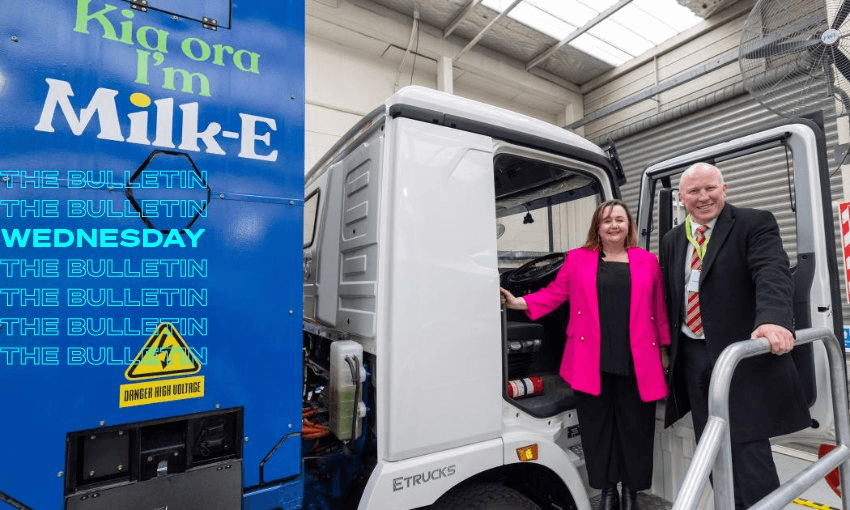As two New Zealand companies roll out electric trucks, the new Transpower chair says we’re living on borrowed time and we need more power, writes Anna Rawhiti-Connell in The Bulletin.
Electric trucks for Fonterra and New Zealand Post
On Tuesday, Fonterra introduced Milk-E, the first electric milk tanker in its fleet. I can’t help but think of WALL-E, the loveliest robot from Pixar’s 2008 animated fable about over-consumption. It was actually named by a Murchison farmer after an always risky “name the .…” competition. Well done to that farmer. Milk-E is part of the company’s decarbonisation programme and runs on batteries. Energy minister Megan Woods was there for its launch. New Zealand Post has also unveiled an electric truck. It does not have a name. I mean, Post-E is just sitting there, but please feel free to send me suggestions. The truck runs on a hydrogen-powered fuel cell.
Sales of hybrid EVs up 482% this year
Electric vehicles (EVs) have gone from being something of an anomaly and are on their way to becoming ubiquitous, quickly. Chris Schulz recently looked into demand for electric vehicles and found there is a waiting list of up to a year for some brands. Sales for battery electric vehicles are up 178% this year as at the end of June, while sales for plug-in hybrid electric vehicles are up 482% for the same period according to the Automobile Association. The government wants 30% of New Zealand’s light vehicle fleet to be electric by 2035 with transport minister Michael Woods recently flying into Norway to try and get EV manufacturers to sell more cars to New Zealand.
Demand for energy set to double
The supply of vehicles is only one part of the equation. Electricity generation capacity and a network of charging stations to power a growing electrified fleet are core infrastructure needs. To meet the government’s goal of net zero emissions by 2050, we need to significantly grow our clean electricity generation over the next 30 years. As the Infrastructure Commission noted in their new strategy released in May, getting consent for building the required infrastructure is hard. RNZ’s Hamish Cardwell has taken a look at the huge change underway in the electricity sector with demand for energy set to double as we move to electrify the country’s cars and trucks and industrial boilers. The transition, he writes “is tricky but doable”.
“We’re living on borrowed time” says Transpower chair
Over the weekend the Herald’s Jamie Grey profiled the new chair of Transpower, Keith Turner (paywalled). Turner says we take for granted what electricity does, yet it makes up 2.5% of GDP and supports the other 97.5% of GDP. “Without it, we wouldn’t have any GDP at all. It is profound. It’s fundamental and to me it’s as important as land, air and water” he says. Turner’s comments about New Zealand’s electricity generating capacity however, are pretty blunt. He says we need more electricity and that “we’re living on borrowed time”. Transpower modelling points to a need for 70 terawatt hours in 30 years’ time. New Zealand currently produces 40 terawatt hours per year. Transport, Turner says, “is going to be a big chunk of that”.


